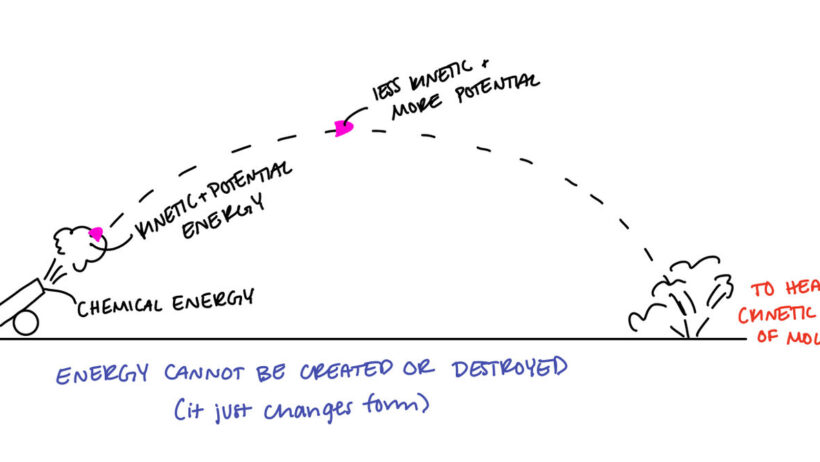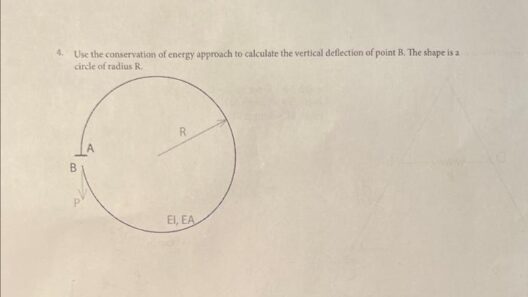The realm of physics is laden with symbols and abbreviations, each representing fundamental concepts that govern the universe. In the study of energy conservation, one such symbol emerges as both ubiquitous and essential: the letter ‘G.’ This enigmatic character holds significant importance within the broader framework of physical science, especially when delving into gravitational forces. To grasp the full implications of what ‘G’ stands for, one must navigate through layers of scientific discourse and conceptual understanding.
At its core, ‘G’ symbolizes the universal gravitational constant. This pivotal constant provides a quantitative measure of the gravitational attraction between masses. It can be likened to a silent orchestra conductor, casting a powerful yet invisible influence that harmonizes celestial bodies into their designated orbits, affecting everything from the fall of an apple to the gravitational binding of galaxies. The value of ‘G’ is approximately 6.674 × 10-11 N(m/kg)2, a number that, while appearing insignificant, governs the mechanics of the cosmos.
To truly appreciate ‘G,’ one must embark on a journey through the annals of physics. The concept of gravitational force was not always meticulously quantified. Sir Isaac Newton laid the groundwork in the late 17th century with his law of universal gravitation, which eloquently articulated that every point mass attracts every other point mass with a force that is directly proportional to the product of their masses and inversely proportional to the square of the distance between them. This initial formulation established a fundamental relationship, yet it lacked the precision today’s physics demands.
In the 18th century, the need for a universal constant became evident. Innovation arose with the advent of sophisticated experiments designed to measure gravitational forces more accurately. Charles-Augustin de Coulomb, although primarily known for his work with electrostatic forces, laid the foundation for such experimental endeavors. Through meticulous trials, scientists began to glean the notion that gravitational interactions were not merely empirical observations but quantifiable phenomena, demanding a steadfast constant to represent them—all leading to ‘G.’
But why does this constant matter so profoundly in the context of energy conservation? The principles of energy conservation rely heavily on the interactions of different forces, including gravitational force. The conservation of energy principle posits that energy can neither be created nor destroyed; rather, it can only be transformed from one form to another. This dynamic interplay is pivotal when considering gravitational potential energy, which is mathematically defined as the product of mass, gravitational acceleration, and height. Here, ‘G’ plays a critical role, as it establishes the intensity of the gravitational field in which objects are situated.
Visualize a boulder precariously perched atop a cliff. The potential energy it embodies is a direct result of its mass and the gravitational pull exerted by Earth, encapsulated in the formula U = mgh, where U represents potential energy, m symbolizes mass, g denotes gravitational acceleration (with ‘G’ embedded within), and h indicates height above the ground. As the boulder teeters, it holds not only the promise of kinetic energy if released but also illustrates the delicate balance between potential and kinetic forms—a narrative echoed throughout the natural world.
Moreover, understanding ‘G’ leads to profound implications for energy conservation on a grand scale. In planetary systems, for instance, the gravitational attraction between celestial bodies influences their orbits, ensuring that energy is not dissipated into the cosmos but rather conserved within a closed system. The elliptical paths traced by planets result from both their initial momentum and the gravitational force dictated by ‘G.’ This persistent influence has ramifications not only for astronomy but also for the sustainable management of resources on Earth.
On our planet, the implications of gravitational influence can be observed in phenomena such as tides. Oceanic tides are a tangible manifestation of gravitational forces at play, primarily governed by the gravitational pull exerted by the moon and the sun. These rhythmic movements provide a natural system of energy generation, highlighting the interconnectedness of gravitational forces and energy conservation—an intricate dance that sustains Earth’s ecosystems.
Furthermore, the concept of energy conservation, bolstered by our understanding of ‘G,’ extends into modern technologies. From wind turbines harnessing kinetic energy to hydroelectric systems converting gravitational potential energy into viable electricity, the application of these principles is vast. Engineers and scientists alike rely on the gravitational constant to produce efficient designs that minimize energy loss and maximize output, all while honoring the tenets of conservation.
In closing, the letter ‘G’ stands not just for a formidable force within the confines of physics but embodies the essence of energy conservation itself. This single character encapsulates a wealth of knowledge, revealing how forces interact within the universe and offering insight into energy’s transformative potential. Thus, while it may appear as merely a symbol on a chalkboard, ‘G’ resonates deeply within the fabric of existence, urging humanity to recognize the unseen forces that govern both nature and our efforts toward sustainable living.
Like a lighthouse guiding a ship through turbulent waters, understanding ‘G’ illuminates our path toward a future where energy conservation becomes paramount, empowering us to harness the universe’s energies responsibly. Embracing this knowledge, we stand at the brink of a symbiotic relationship with our planet, spanning from microcosm to macrocosm, forever tethered by the gravitational law charitably imparted by ‘G.’








